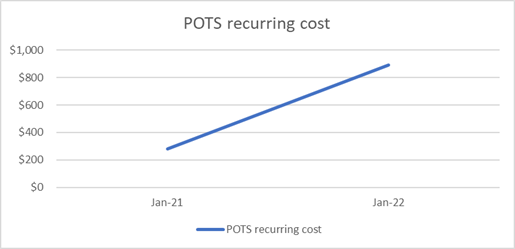No business can afford to go dark. Whether a natural disaster, cyberattack, power outage, supply chain disruption, or pandemic—implementing a business continuity plan (BCP) enables an organization to respond effectively. Abilita consultants are skilled at designing BCPs that include key strategies to implement before disruptive events occur and can help you prepare for the unforeseen.
A BCP is a set of procedures that help an organization continue its critical operations and functions during and after an event or crisis. It is a proactive approach to managing and mitigating risks, ensuring that the business can quickly recover and resume operations with minimal downtime and impact on productivity.
Abilita’s experts create BCPs that outline the steps, resources, and responsibilities required to ensure a business stays up and running. We consider the following eight components when developing BCPs:
- Disaster Recovery Plan (DRP): A DRP outlines the procedures and processes to recover and restore critical IT infrastructure, systems, and data in the event of a disaster. It includes strategies for backup and restoration, data replication, system redundancy, and off-site storage to ensure business operations can resume swiftly.
- Communications Continuity Plan: Maintaining communications is essential to maintaining operations. The communications component of a BCP identifies potential telecom and technology risks and vulnerabilities, establishes communication protocols, and defines roles and responsibilities during emergencies. It should also include steps for alternate work arrangements, such as remote work or temporary office relocation.
- Redundant Network Infrastructure: The implementation of redundant network infrastructure helps mitigate the impact of network failures or disruptions. This can involve establishing internet connections from more than one service provider, and backup hardware, equipment, and power systems like generators or uninterruptible power supplies (UPS).
- Cloud-based Services and Data Backup: Leveraging cloud-based services enables businesses to store critical data, applications, and services off-site, reducing the risk of data loss and providing remote access during emergencies. Backups of important data should be performed regularly to ensure redundancy and quick recovery in case of data loss or system failures.
- Communication and Collaboration Tools: The availability of reliable communication and collaboration tools and processes is crucial for business continuity. Video conferencing platforms, instant messaging applications, project management software, and virtual private networks (VPNs) are tools that can provide secure, remote access. Employee access and training is crucial for these to be successful.
- Testing and Training: Regular testing of disaster recovery and business continuity plans to identify any weaknesses or gaps in strategies or implementation is also crucial. Conducting simulated scenarios and drills to evaluate the effectiveness of plans, making necessary plan adjustments, and training employees on emergency protocols will ensure disaster does not catch a business by surprise.
- Vendor and Supplier Relationships: Maintaining strong relationships with telecom/technology vendors and suppliers is key. Discussing vendors’ crises plans will clarify how service may be impacted. Sometimes setting up backup suppliers with established communication channels is necessary to ensure business operations are not interrupted.
- Cybersecurity Measures: Strong cybersecurity measures should always be in place, but during a disaster they are essential. Robust security protocols such as firewalls, intrusion detection systems, and regular security audits will protect critical systems and data during disruptive events.
Once complete, it is paramount to regularly review, update, and test a BCP. Additionally, compliance with relevant regulations and standards in the telecom and technology sectors should be factored in when developing these plans. Give us a call. Abilita’s experts are ready to develop a BCP to ensure your business has optimum uptime during a time of crisis.

